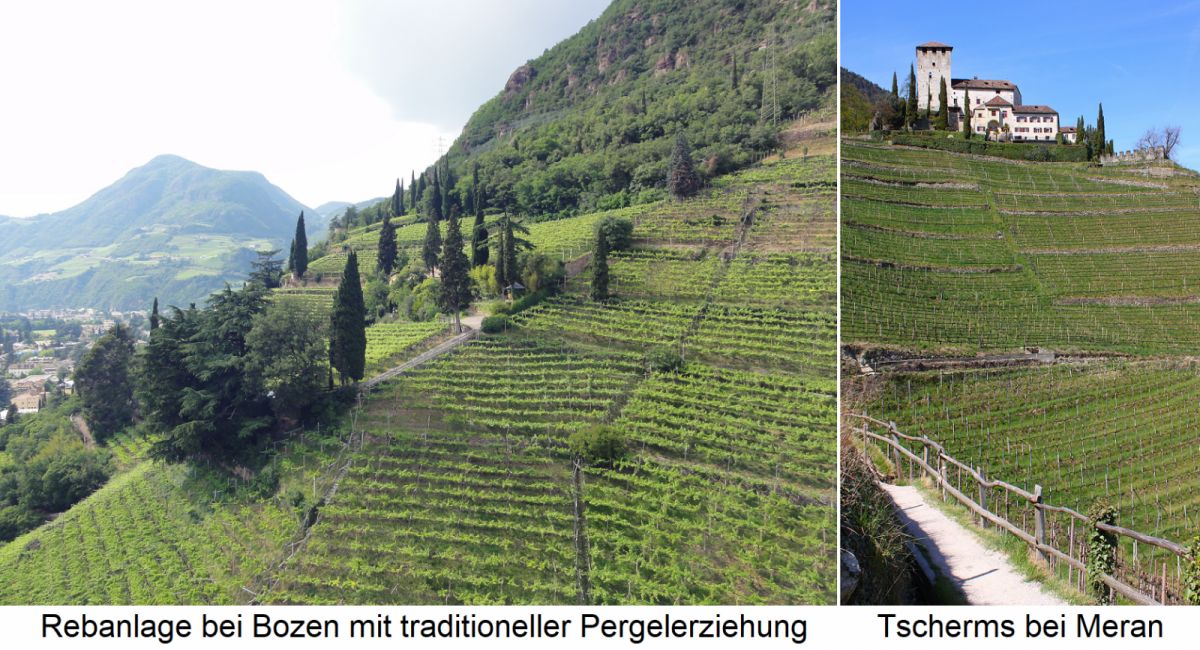South Tyrol
The northern part of the Italian dual region of Trentino-South Tyrol; the southern part is Trentino. The Italian name is Alto Adige. It corresponds geographically to the Autonomous Province of Bolzano (Italian: Bolzano). The Rhaeto-Romans planted the first vineyards here as early as 1,000 BC, making South Tyrol one of the oldest German-speaking wine-growing regions. Here the Romans learnt from the Celts how to use wooden wine barrels for storage and transport. Viticulture reached its peak in the Middle Ages.

The German emperors who travelled to Rome for their coronation became acquainted with and appreciated South Tyrolean wine on their journeys. As in many other wine-growing regions, phylloxera and mildew led to a decline from the end of the 19th century. South Tyrol's annexation to Italy after the First World War in 1919 meant that the northern sales markets were lost. After the loss of quality in the 1980s due to the marketing of mass-produced wines, the region has now regained access to top quality.
Vineyards
The vineyards cover 5,500 hectares of vines, mainly at an altitude of 500 to 1,000 metres above sea level. These often extend on terraced slopes and hills in the Adige Valley (Valdadige) between Merano (Meran) and Salorno (Salurn) and in the Isarco Valley between Bolzano (Bolzano) and Bressanone (Brixen), with smaller areas under cultivation in the Venosta Valley (Vinschgau), formerly also known as the Venosta Valley (Valle Venosta). Only the Lagrein area of Gries (San Quierino) and the white wine area of Salurn are located at the bottom of the valley. The traditional vine training Pergola is still widespread here. In the Adige Valley, the soils consist of gravelly alluvial gravel, on the slopes of weathered scree with a high lime content. The climate is continental with warm summers and cold...
Voices of our members

Serious sources on the internet are rare - and Wine lexicon from wein.plus is one such source. When researching for my articles, I regularly consult the wein.plus encyclopaedia. There I get reliable and detailed information.
Thomas Götz
Weinberater, Weinblogger und Journalist; Schwendi